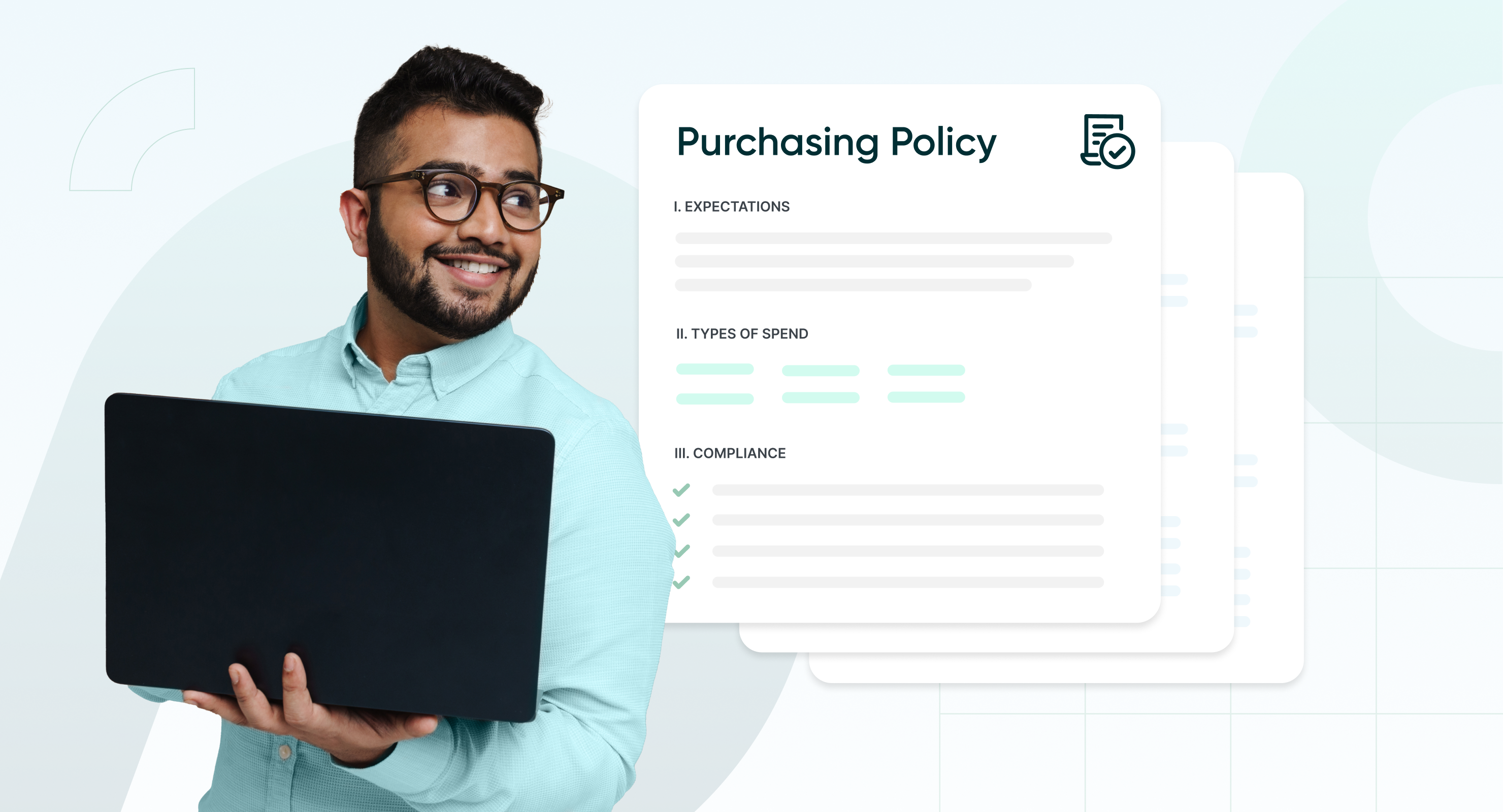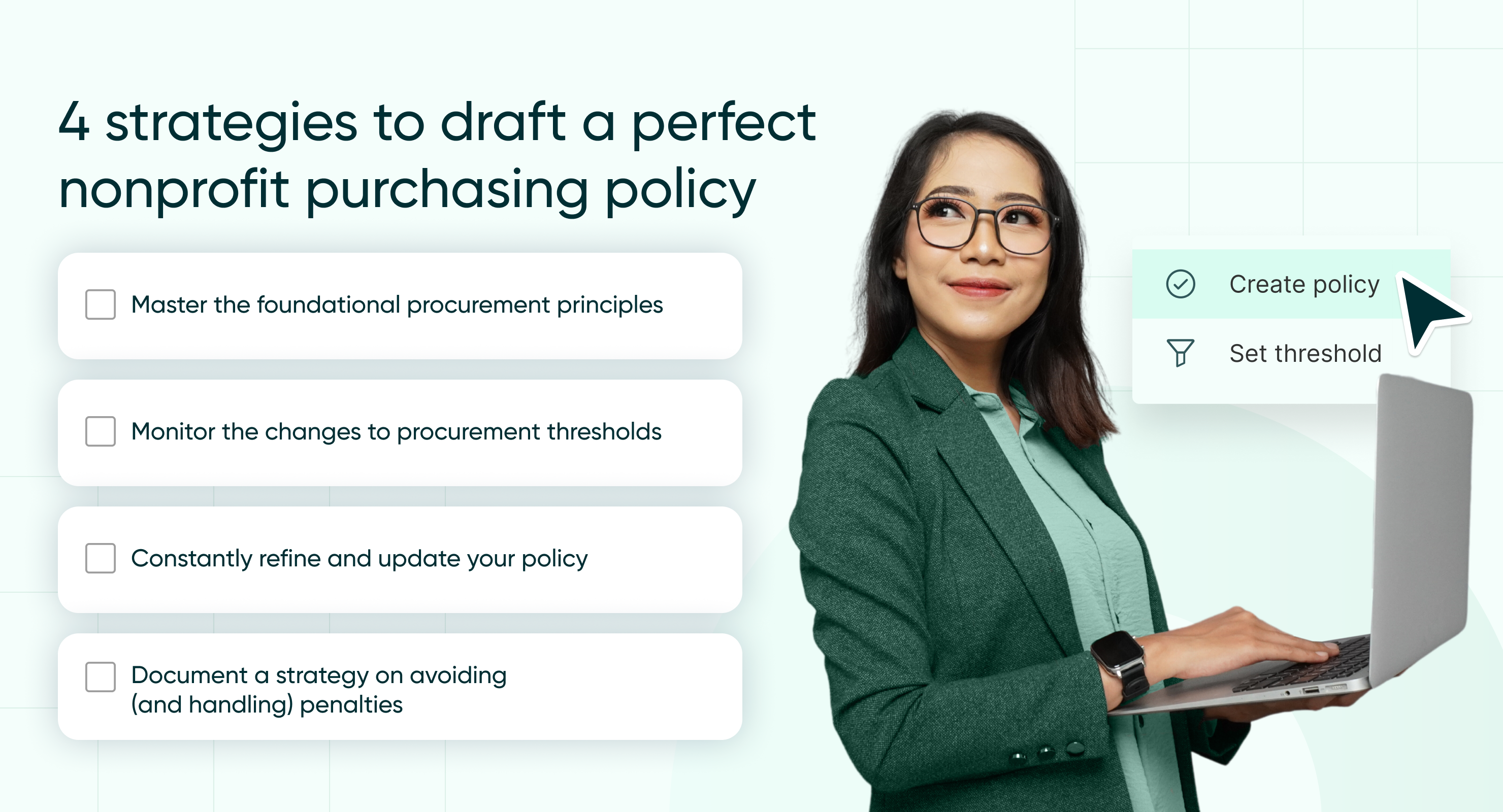
Nonprofit Purchasing Policy: 4 Considerations to Make
When it comes down to enhancing communities and the quality of life for people, every dollar matters in the nonprofit space.
Not only is every dollar important, but it also needs to be tracked diligently. Because nonprofit organizations in the United States are spending publicly-raised funds, they are closely monitored and heavily regulated. Being compliant involves adhering to stringent purchasing guidelines that include:
-
Strict vendor selection
-
Clear-cut payment terms
The need for accountability should come as no surprise. Nonprofits play a vital role in our communities and it’s their responsibility to ensure that progressive and positive practices come from spending public funds, practices that benefit all of society.
Drafting a strong purchasing policy will contribute to your organization’s long-term sustainability and keep you accountable and transparent to the public and your stakeholders.
In this blog, we outline the four key considerations you need to make when writing a nonprofit purchasing policy so that you can produce a clear, concise, and digestible rulebook that minimizes the risk of non-compliance and reduces rogue spending.
Before we begin: the five methods of procurement
In order to perfect the policy, you need to understand the rules.
Uniform Guidance, as outlined by the U.S. Office of Management and Budget (OMB), remains the standard for regulatory compliance in the nonprofit space since its introduction in 2014.
Under Uniform Guidance, spend management rules apply to all federal awards and contracts where government capital is used to obtain goods and services that help further a nonprofit’s cause.
To ensure compliance, it’s important to know these rules inside and out. Although they evolve year over year, keeping up with the changes is a necessary part of responsible spending.
Here are the five basic principles of procurement, as outlined by Uniform Guidance:
-
Micro-purchase: Purchases that do not exceed the micro-purchase threshold (generally $10,000) do not require competitive quotes. For construction-related purchases subject to Davis-Bacon and related acts, the threshold is $2,000.
-
Simplified acquisition: For purchases exceeding the micro-purchase threshold but less than the Simplified Acquisition Threshold (currently $250,000), informal procurement methods may be used. Price or rate quotes must be obtained from an adequate number of qualified sources.
-
Sealed bids: For purchases exceeding the simplified acquisition threshold ($250,000), a formal solicitation is required. A firm fixed-price contract is awarded to the responsible bidder whose bid conforms to all material terms and is the lowest in price. This method is typically preferred for construction projects.
-
Competitive proposals: For purchases exceeding $250,000, this method is used when sealed bids are not appropriate. Proposals are solicited from an adequate number of qualified sources, and the award is made based on the most advantageous proposal, considering price and other factors. Contracts may be fixed-price or cost-reimbursement.
-
Noncompetitive procurement: This method, also called sole-source procurement, is allowed only in specific cases, such as when the item is available from a single source, a public emergency prevents a delay, the federal agency approves a written request, or competition is deemed inadequate after solicitation of multiple sources.
With these procurement methods in mind, here are four ways to perfect writing your nonprofit purchasing policy.
4 strategies to draft a perfect nonprofit purchasing policy

-
Master the foundational procurement principles
Every nonprofit should know its own culture of spending money, and how it ties in with specific state, local, and federal procurement standards. Ultimately, this will inform your procurement policy and will ensure you cover areas like how to govern the actions of teams who win grants or government contracts, and how to handle conflicts of interest.
As well as these areas, your nonprofit purchasing policy needs to include Uniform Guidance ‘musts’. In short, organizations must:
- Maintain written policies and procedures for procurement covering the methods available under these regulations
- Ensure that costs are reasonable and necessary
- Provide for full and open competition
- Maintain written standards of conduct covering internal and external conflicts of interest
- Maintain documentation addressing cost and price analysis and vendor selections where applicable based on the method of procurement used.
-
Monitor changes to procurement thresholds
Uniform Guidance spending thresholds are often subject to change, and keeping track of them is key to ensuring your nonprofit purchasing policy is always up to date.
In your policy, be sure to outline where, how often, and when to check and update these thresholds.
For example, in 2018, the OMB issued a memorandum to implement the effect of a National Defense Authorization Act (NDAA). This new ruling increased the micro-purchase threshold from $3,500 to $10,000, as well as affected other purchasing thresholds.
-
Constantly refine and update your policy
When procurement thresholds change like in the above example, it’s up to your organization to amend your procurement policy to ensure you are compliant with this new threshold. To operate under the higher thresholds outlined above, for instance, your organization must revise the sections of procurement policies that relate to Uniform Guidance requirements.
Remember, you are subject to the ‘most restrictive rule.’ You are bound by your policy’s rules despite increased thresholds.
-
Document a strategy for avoiding (and handling) penalties
In cases where vendors, teams, or executive board members violate your procurement policy, it’s critical you know what to do.
Outlined in your nonprofit purchasing policy, you need to identify any fines or termination rules that exist should such an event occur.
Adding these into your policy builds trust across your nonprofit and ensures all team members are clear on expectations and how to succeed when spending awarded capital.
More than anything, though, these guidelines help to build a conscious spend culture that creates end-to-end compliance.
So what?
Retaining regulatory compliance for nonprofits is no easy feat; as we describe above, there are many rules to follow and guidelines to understand. Without clear documentation of these guidelines, it becomes tricky for team members to know exactly how to purchase, when, and what to do.
Now is the time to build confidence with compliant and strategic purchasing.
But a nonprofit procurement policy is the tip of the iceberg. Once you’ve outlined how to spend, it’s time to bake those rules into your purchasing workflows so that teams can develop the confidence to spend without fear.
Achieving that requires modern spend management tools. Remember, every dollar in this space counts.
To find out how Procurify can help your nonprofit spend smarter and remain compliant, book a demo today.
